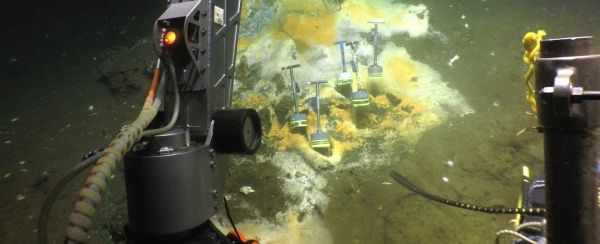Researchers find deep-sea microbes that feed on ethane and grow them in the laboratory; what is particularly exciting: The mechanism by which they break down ethane is reversible.
Unlike animals, which only digest proteins, carbohydrates and fats, microorganisms also feed on a variety of other organic compounds. Even natural gas does not stop them. Researchers from Bremen have now discovered a microbe in the deep sea that eats ethane, which, with a share of up to 15%, is the second most common component of natural gas.
Life in the extreme
The research group led by Gunter Wegener from the Max Planck Institute for Marine Microbiology, in cooperation with researchers from other institutes, discovered the previously unknown microbe in the seafloor of the Guaymas Basin at a water depth of 2000 meters in the Gulf of California. “The Guaymas Basin is a natural laboratory teeming with new species,” Wegener said. “Responsible for this extraordinary diversity are hot fluids gushing out of the seafloor, which attract many different species. Already today, we have discovered many organisms in this habitat.”
Read more at Max Planck Institute for Marine Microbiology
Image: Diving in the Gulf of Mexico: With the submersible ALVIN, the researchers from Bremen were able to reach the seafloor. There they used ALVIN's grab arm to collect sediment cores from the seabed. White-orange coloured microbial mats made of sulfur-oxidizing bacteria indicate hot vents, where particularly large amounts of methane and other energy-rich compounds are released. CREDIT: Woods Hole Oceanographic Institution


